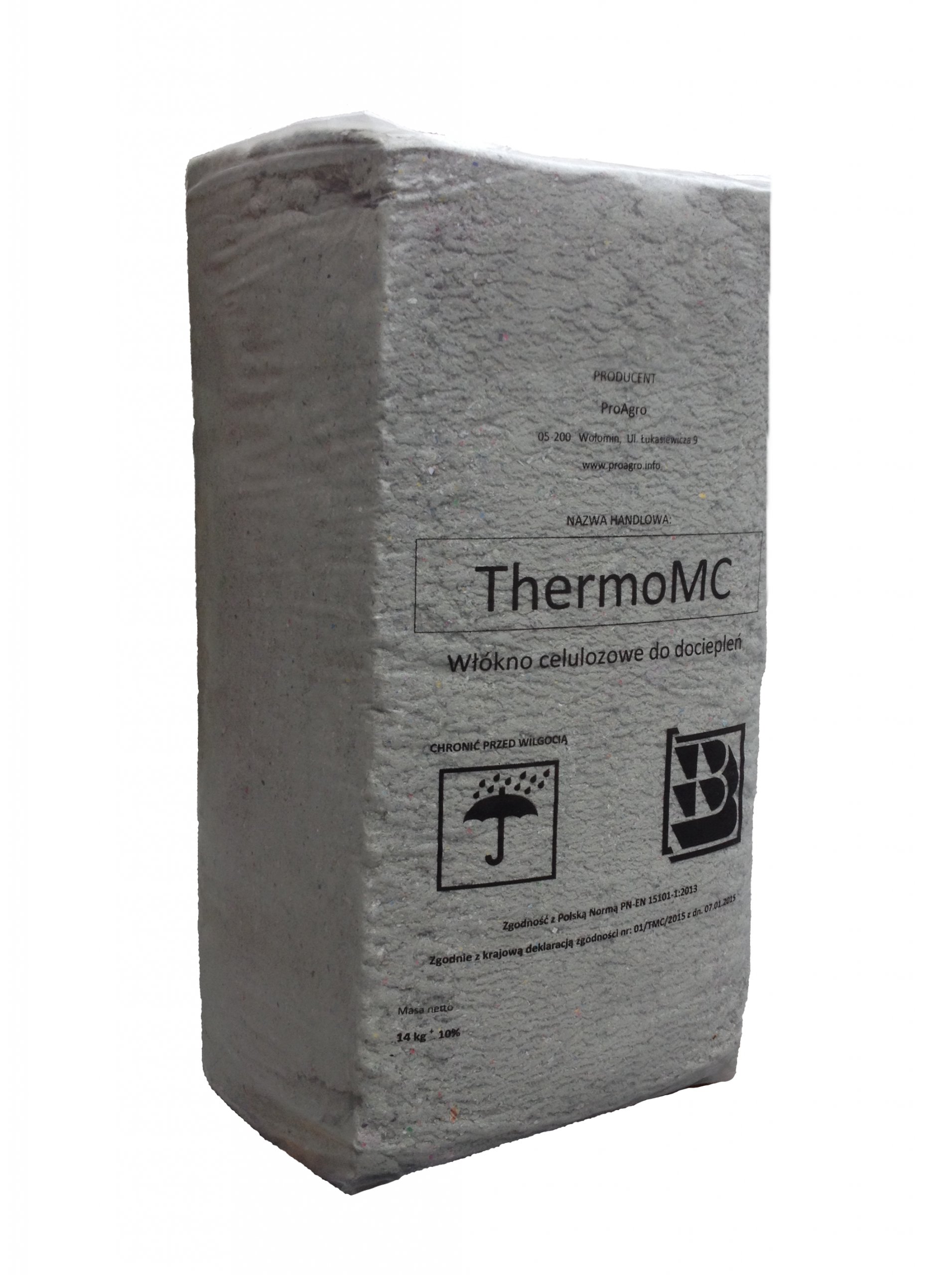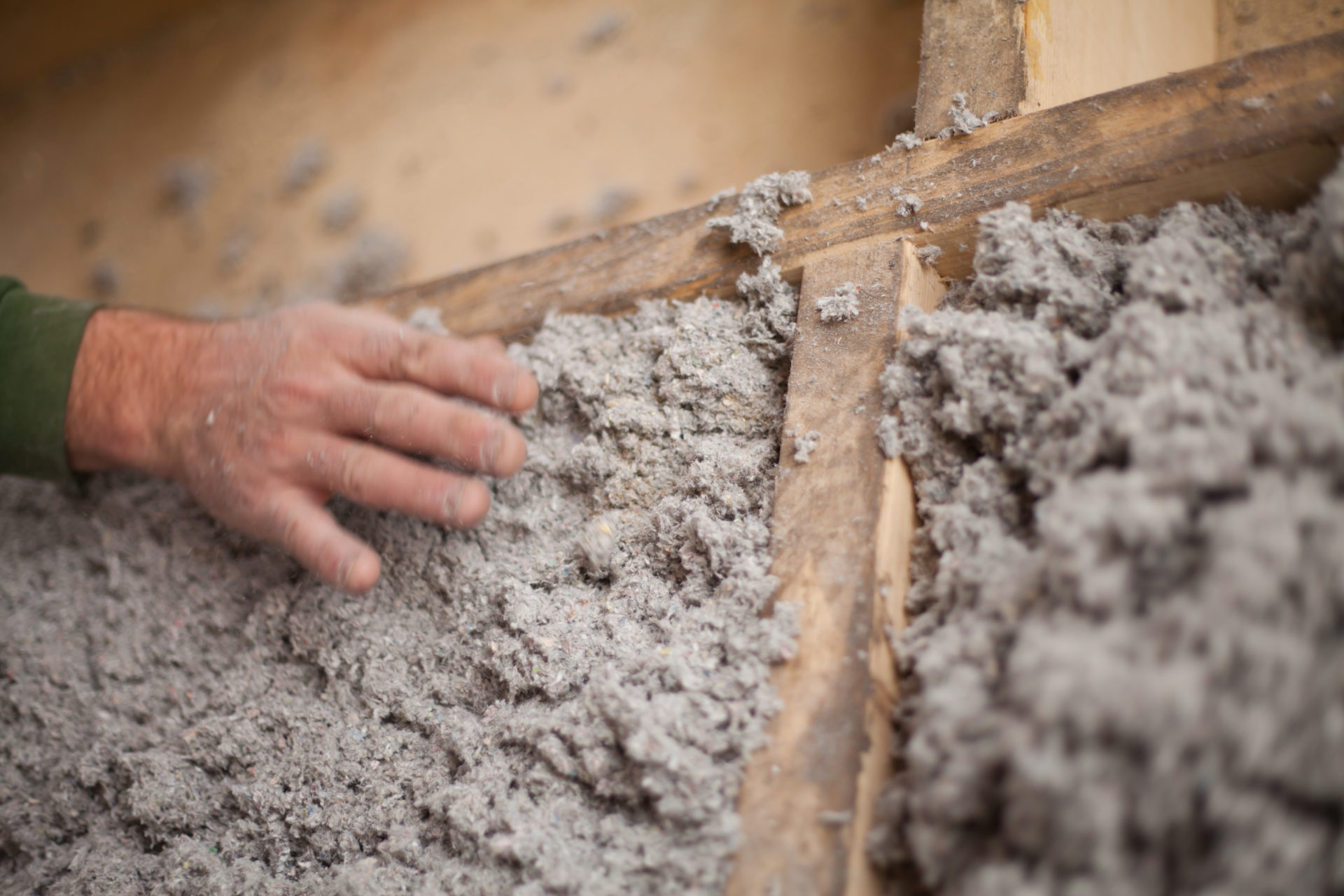
Thanks to a particular method of cellulose open blow, it may be successfully used in new, refurbished and thermally insulated buildings made of brick, providing so called “seamless insulation” without thermal bridges.
It can be used excellently for loose feeding on usable attics, flat roofs, be blown into closed partitions (external walls, partition walls, roof surfaces).
Also the spraying method may be used (cellulose wool moisturised slightly by means of water and adhesive), a cellulose wool layer may be fully controlled before it is covered.
Blown or sprayed material covers the entire space regardless of its shape. Cellulose wool may fill rising mains and also thermally insulate cables there.
In case of refurbishment or thermal insulations, cellulose wool may fill in missing parts of existing thermal insulation. Thanks to its water absorption properties, cellulose wool improves moisture conditions in old buildings.
Thanks to its perfect technical parameters, cellulose wool is becoming one of most often used materials for thermal insulation. ThermoMC cellulose wool has a thermal conductivity coefficient of 0.037 W(mK). According to the new provisions of the Regulation on technical conditions that should be met by buildings and their localisation, that entered into force on 1 January 2014, the conditions are as follows:
| In force | Thermal transmittance value (U value) (W/m2k) | Thickness of ThermoMC insulation layer (cm) |
|---|---|---|
| since 31 December 2013 | 0,25 | 16 |
| since 1 January 2014 | 0,20 | 20 |
| since 1 January 2017 | 0,18 | 22 |
| since 1 January 2021 | 0,15 | 26 |
The table presents thermal transmittance values of a ventilated flat roof and corresponding thickness of ThermoMC insulation layer.

In case of 16 cm thick insulation, ThermoMc cellulose wool has a thermal transmittance value U equal to 0.25 W/m2K, and in case of 26 cm thick insulation layer, the value amounts to U= 0.15 W/m2K. If we apply insulation thick to 40cm to a ventilated flat roof, we will obtain the value U= 0.10W/m2K; such low thermal transmittance value enables very high energy efficiency. Such solutions are very successfully used in the Nordic countries, and inhabitants of a house insulated in such way enjoy comfortable conditions and pay less for heating. As compared to other insulation materials, cellulose wool produces excellent results. If this type of insulation is used, heat losses will be reduced significantly due to continuity and its “jointless” tightness.
Ecological thermal insulating materials is characterised by low air permeability, while the air content in its structure is very high (ca. 70%). Thanks to this structure, cellulose fibre is characterised by high moisture absorption, with simultaneous hygroscopic properties, which make it possible for the material to give away the moisture absorbed by it from air and building structures. In case of cellulose it is not necessary to use plastic vapour barriers, you may possibly use wind barriers outside and cellulose on the internal side of a building.
It is the property of cellulose wool that it may absorb moisture up to 15% of its volume, not losing its insulating properties, and it is due to the air captured in the insulating layer. It is due to the fibrous structure of the cellulose wool. Its fibres are able to absorb water contrary to mineral wool, that originate from rocks and cannot absorb moisture. Due to its numerous advantages, cellulose insulation is perfect in exchange of vapour in an entire insulated attic. According to examination conducted in buildings (material moisture in case of normal air moisture of 50% amounts to ca. 5%, while in case of disadvantageous air moisture in rooms amounting to 70%, material moisture is 11% ).
Cellulose wool creates a jointless insulation layer as opposite to other insulation materials in form of panels. When insulation panels are laid, thermal bridges occur often in the places of joints. Therefore, cellulose is installed by means of pneumatic blowing method, thanks to such solution we have a guarantee that we can avoid all thermal bridges.

Noise protection
Cellulose wool insulation has perfect noise protection properties. When it fills partition walls, ceilings or floors resting on floor joints, it stops noises from adjacent rooms. Jointless surfaces absorb sound waves, thanks to which reverberation in rooms is considerably reduced, disruptions are minimized and clear and undisturbed sound image is created.
Fire protection
ThermoMC does not produce any poisonous substances during a fire in a building; it does not burn but undergoes slow carbonisation. Health damages during fires are caused mainly by poisonous smoke and various toxic substances in it, but not flames. Therefore, due to its hygroscopic properties and impregnation with flame retardants, our material is the best fire insulation, as well as excellent protection against various insects, fungi or rodents. Insulation made of impregnated cellulose wool does not serve as food or living environment for rodents. Another important property of the product is the fact that during fire it is ingenious protection for steel and wood structures of buildings.
If wood structures have been insulated with ThermoMC cellulose, they are safer, since the material offers quick drainage of water from wood and distributes it all over its surface. Thanks to its fibrous structure, cellulose stores wood and its empty air areas continue to be empty and therefore insulation does not lose its insulating properties. ThermoMC may absorb water up to 15% of its weight. Unlikely cellulose, mineral wool does not absorb water but stores it among its fibres, which lowers thermal insulation of a partition.
Protection against fungi and vermin
According to statistics, buildings insulated with cellulose are less exposed to moisture, therefore fungi and mould do not develop there.
Due to the mineral salt contents, and specially borum salt, ThermoMC insulation protects cellulose fibres against fire and fungi, therefore it protects a structure against moisture.
Unwelcome guests, like martens or weasels, are a popular problem of functional attics. Insulation made of impregnated cellulose wool does not serve as food or living environment of rodents. Cellulose wool protects our attics and guarantees silence and quietness.
Natural thermal insulation
Cellulose fibres acquired by our company from newspapers are the natural raw material used for production ThermoMC cellulose wool. They are made of recycled materials, such as paper and newspapers. Therefore, the solutions offered by our company help to protect forest resources and reduce use of fossil energy resources, when applying production processes enabling reduction of CO2 emissions. Cellulose wool is the first tested and ecologic thermal insulation material that is absolutely environment-friendly from its production until waste disposal.
